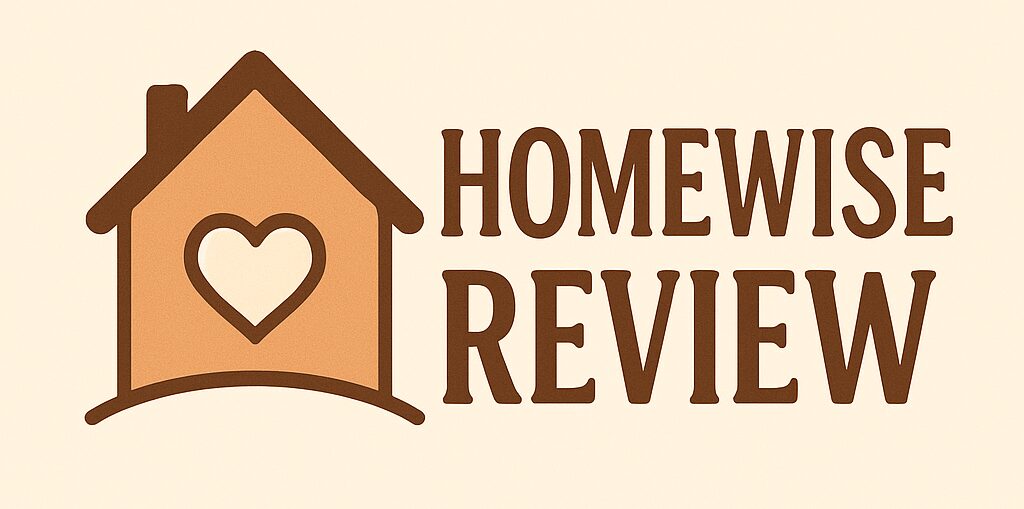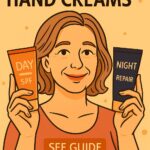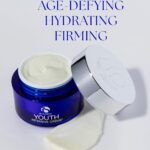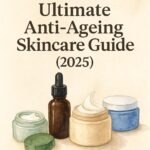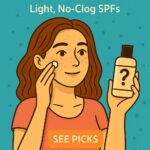Heads up: Rosacea is medical. This guide is general info, not diagnosis or treatment. If you are burning, stinging, or flaring often, speak to a dermatologist.
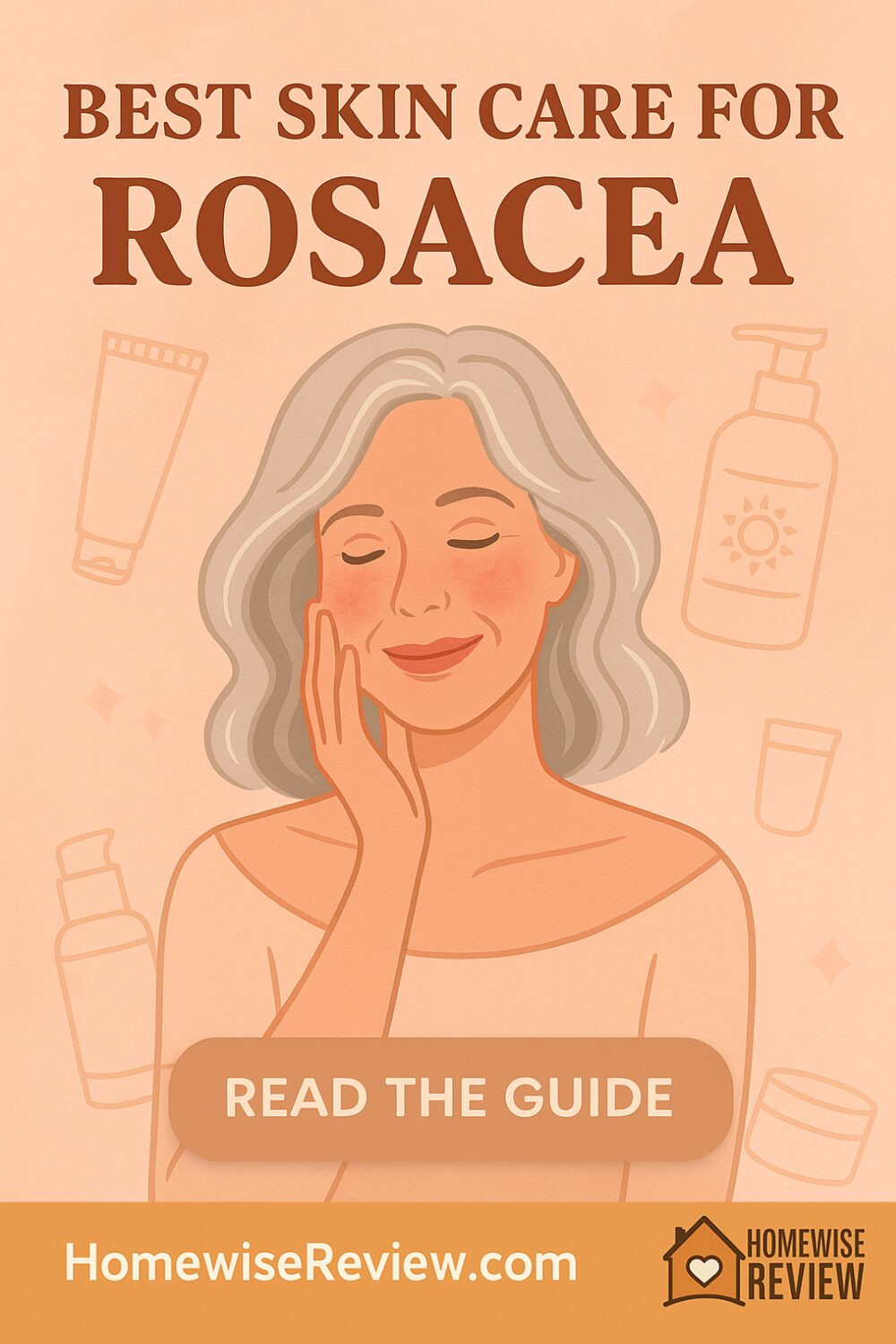
Rosacea-prone skin needs calm, not complication. The winning routine is simple, fragrance-light, and barrier focused. Think gentle cleansers, moisturisers with ceramides and humectants, and sunscreen that does not sting. Keep actives minimal and patch test anything new. Triggers vary, so one person’s hero can be another’s flare.
Below are three standout products that fit most rosacea routines. A soothing cleanser that does not strip, a barrier first moisturiser that calms visible redness over time, and a daily mineral sunscreen that behaves under makeup. Each review explains who it suits, who should skip, and how to use with fewer flare regrets.
Quick picks
- Best gentle cleanser: La Roche-Posay Toleriane Hydrating Gentle Cleanser
Creamy cleanse without tightness. Rating: 4.7/5 - Best barrier moisturiser for redness look: CeraVe PM Facial Moisturizing Lotion
Ceramides, niacinamide, and lightweight hydration. Rating: 4.7/5 - Best daily mineral sunscreen: EltaMD UV Physical Broad-Spectrum SPF 41 (tinted mineral)
Mineral only, makeup friendly tint. Rating: 4.6/5
This guide may contain affiliate links. If you buy through our links, we may earn a small commission at no cost to you.
Deep dives
1) La Roche-Posay Toleriane Hydrating Gentle Cleanser — Best cleanser
Why it stands out: Cream cleanser that removes daily grime without foaming harshly. Uses ceramides, niacinamide, and glycerin to support the barrier while you cleanse. Owner feedback often mentions less tightness after washing and fewer stingy moments when applying serum after.
Texture and scent: Lotion-cream that rinses clean with no fragrance cloud.
Who it is for: Normal to dry rosacea-prone skin or anyone who feels stripped by gel cleansers.
Who should skip: If you are very oily and need a second cleanse for sunscreen, keep this as morning cleanse and pair with a mild gel at night.
How to use for best results:
Use lukewarm water. Massage 30 seconds, then rinse well. Pat dry. No scrubbing tools. If you wear long-wear makeup, remove with a fragrance-free micellar first, then cleanse.
Pros
- Non-stripping
- Barrier supportive ingredients
- Plays nicely with prescription topicals
Cons
- Might feel too creamy for very oily skin in summer
Rating: 4.7/5
2) CeraVe PM Facial Moisturizing Lotion — Best barrier moisturiser
Why it stands out: Lightweight lotion with ceramides, cholesterol, hyaluronic acid, and niacinamide. This combo supports the skin barrier and can help the look of diffuse redness with consistent use. It layers under mineral sunscreen without pilling and is a good partner for topical prescriptions.
Finish and feel: Light, non-greasy, sinks in fast. No strong scent.
Who it is for: Most rosacea types who want hydration without shine. Great under makeup.
Who should skip: If you are highly sensitive to niacinamide, patch test first or try a plain ceramide cream.
How to use for best results:
Apply after cleansing on damp skin. If using metronidazole, azelaic acid, or ivermectin, follow your prescriber’s order. At night you can seal very dry patches with a tiny layer of plain petrolatum.
Pros
- Barrier-building ingredients at an accessible price
- Lightweight under SPF and makeup
- Often tolerated with Rx routines
Cons
- Niacinamide can tingle for a minority of users
Rating: 4.7/5
3) EltaMD UV Physical Broad-Spectrum SPF 41 (tinted mineral) — Best daily mineral sunscreen
Why it stands out: Zinc oxide and titanium dioxide only. No chemical filters, which many rosacea folks find stingy. The universal tint helps counter surface redness and sits well under sheer base. Water resistant for outdoor days.
Finish and feel: Satin-matte tint that evens tone. Fragrance-free.
Who it is for: Rosacea-prone skin that stings with chemical sunscreens. Great for make-up days thanks to the tint.
Who should skip: Deepest skin tones may find the tint too light. Try a deeper-tint mineral or layer a matching tinted moisturiser on top.
How to use for best results:
Two finger lengths for face and neck. Let moisturiser set first. Reapply every two hours outdoors. Press on rather than rubbing if you are flushy.
Pros
- Mineral only filters
- Tint softens visible redness
- Works under makeup
Cons
- Can cling to flakes if you skip moisturiser
- Tint may not suit all tones
Rating: 4.6/5
Routine order and tips
AM: Gentle cleanse or rinse → CeraVe PM or other light barrier cream → EltaMD mineral SPF → Makeup if you wear it.
PM: Gentle cleanse → Apply any prescription topical as directed → CeraVe PM → Optional thin ointment on sore corners.
Keep new products to one change every 7 to 10 days. Avoid hot water, strong fragrances, harsh scrubs, minty or mentholated products, and essential oils on active areas.
Wrap up
Rosacea care works best when it is boring in the best way. A gentle cleanse, a barrier first moisturiser, and a mineral sunscreen you will actually wear will do more for day-to-day comfort than a shelf full of actives. Keep the routine simple, watch your personal triggers, and layer in any prescriptions as advised.
If you want, I can tailor this to subtype focus such as papulopustular rosacea vs flushing dominant, or add retailer shortcodes once your PA-API is live.
FAQs
Is rosacea the same as sensitive skin?
Not quite. Sensitive skin is a tendency to react. Rosacea is a chronic inflammatory condition with subtypes. Many people with rosacea also have sensitive skin, which is why simpler routines help.
Do I need prescription treatment as well as skincare?
Often yes. Topicals like metronidazole, azelaic acid, or ivermectin can control inflammatory bumps and persistent redness. Skincare supports the barrier and reduces sting so prescriptions are better tolerated.
Chemical or mineral sunscreen for rosacea?
Mineral filters are usually better tolerated because they sit on top of skin rather than absorbing. Some people are fine with modern chemical filters. Patch test either way and stop anything that stings.
Which ingredients should I avoid during a flare?
Common culprits include alcohol-heavy toners, strong acids, high fragrance, menthol, mint, eucalyptus, peppermint, and physical scrubs. Keep water lukewarm and simplify to cleanser, bland moisturiser, mineral SPF.
Can niacinamide help redness?
For many, yes. At low to moderate levels it can support the barrier and reduce the appearance of redness. A minority tingle with it, so patch test and introduce slowly.
See also
Building a calm base helps makeup sit better and reduces the urge to over-cover. Compare hydrating, texture-friendly options in Best Primer for Mature Skin and bases that move with expression in Best Foundation for Mature Skin Over 60. If you are dealing with dark circles as well, see Best Concealer for Dark Circles.
For hair or scalp sensitivity that sometimes travels with rosacea, try gentle picks in Best Shampoos Free of Sulfates and Parabens and if dryness is a theme, weekly care in Best Hair Mask for Damaged Hair.
